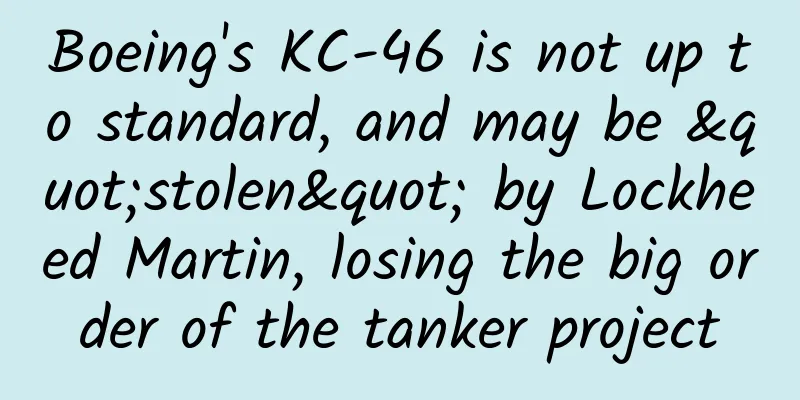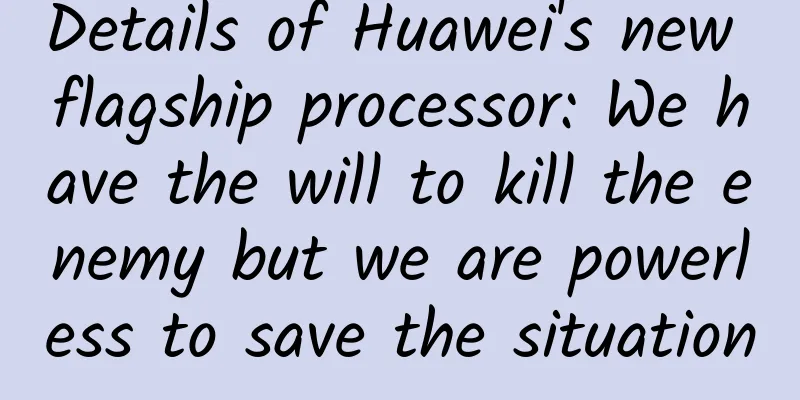Boeing's KC-46 is not up to standard, and may be "stolen" by Lockheed Martin, losing the big order of the tanker project

|
Lockheed Martin has officially launched a bid to supply the US Air Force with the KC-Y "bridge" tanker. The company said that due to the larger size of the KC-Y tanker, its solution will provide longer range and endurance than current tankers. To sweeten the deal, Lockheed Martin said that if the company wins the KC-Y bid, Airbus will build the tanker based on the A330 passenger aircraft LMXT in the United States. Tony Frese, Lockheed Martin's vice president of air mobility and maritime missions, said range is one of the "biggest differences" of the LMXT (short for Lockheed Martin's "next" tanker) from existing tankers. He said the aircraft satisfies the Air Force's desire for a proven commercial derivative tanker because it is based on the Airbus A330 Multi-Role Tanker Transport (MRTT), a version of which lost out to the KC-46 in the KC-X competition. Lockheed Martin submitted information about the updated LMXT to the Air Force in August in response to a U.S. Air Force request for information. The Airbus A330 Multi-Role Tanker (MRTT) is an aerial refueling aircraft based on the Airbus A330-200 civil airliner. The A330 MRTT has a maximum fuel capacity of 111 tons without the use of additional fuel tanks, and also has the space and ability to transport 45 tons of cargo. It has excellent performance and once competed with Boeing's KC-46 for the KC-X project. It lost the bid despite having great advantages in all aspects. It is generally believed that this is the U.S. military's "protection" of its own Boeing company, but the KC-46 is overspent and delayed. Although 47 aircraft have been delivered, it has never been able to form a full combat capability, which makes the U.S. military very disappointed. The two refueling systems of the KC-46 tanker (the hard pipe of the Air Force and the soft pipe of the Navy) have not been properly fixed. “We view (LMXT) as complementary to the Air Force’s existing fleet of KC-135 and KC-46 tankers,” Frazier said. Until the KC-Y goes into production, the KC-10’s single-aircraft range and refueling capabilities will be eliminated. KC-10 really can't hold on any longer The Air Force uses the term "bridge tanker" to refer to the tankers that will continue to replace the KC-135 and KC-10 while a new, potentially stealthy tanker is developed for missions in contested airspace. The service has not yet specified how many aircraft will take part in the KC-Y program. The US military is exploring stealth tankers. After all, tankers are one of the primary targets of competitors of the same level. Assuming a full fuel load, the LMXT could allow the KC-46 to “almost double” its range in the Indo-Pacific region and stay airborne longer, Frazier said. It would also be able to access “30 percent more airfields” in the region — 196 instead of 150 — while carrying the same fuel load as the KC-46, he asserted. The jet’s ability to use multiple airfields is an issue the Air Force has raised with the LMXT, he said. Having too many available bases in the Asia-Pacific means that the US military can put more eggs in several baskets in distributed operations, and there will be more targets for the "express deliveries" of competitors of the same level to strike. In the KC-X competition, Airbus's product did not perform well in airport operations because fewer jets can be deployed on runways at smaller airports. It is unclear whether the Air Force will weigh this factor in the same way in the KC-Y competition. The only advantage of the KC-46 over the A330 MRTT was that it was smaller, so more tankers could be deployed at a single airport. However, given that the U.S. military needs to put its eggs in multiple baskets, this may not be a big advantage. Lockheed Martin formed a partnership with Airbus in 2018 to prepare for potential future tanker competition and is evaluating multiple sites that could build the LMXT stateside. Lockheed Martin will consider the large space at its Marietta, Georgia, facility as the final assembly site, as that facility space is now empty after the C-5 transport modification and update program is completed. Frazier said the plant can accommodate four C-5 transports, so it will be able to accommodate at least four MRTT tankers (also showing how big the A330 MRTT is). He said the site in Mobile, Alabama, where Airbus currently builds A320 passenger aircraft, is also under consideration, but Mobile and Marietta are not the only places Lockheed Martin is looking. The Royal Air Force's A330 MRTT refuels the US Navy's F/A-18E/F "Super Hornet", which shows that there is no problem with compatibility. The KC-46 has only recently been able to refuel the F/A-18E/F Super Hornet. In addition, the size difference between the KC-46 and the A330 MRTT can be seen by comparing the Hornet. Frazier said the company has lined up 150 suppliers in 34 states for LMXT, a number it expects to grow. Frazier noted the jet will be fully "Made in America" but declined to specify how much content will come from U.S. manufacturers. He said the metric is proprietary and still evolving. Lockheed Martin is also touting a new automated refueling system, already in testing, as a key advantage in the next head-to-head battle with the KC-46, which has long had problems with the 3D vision system used by its boom operators. The KC-46's refueling boom has always been a big problem “It’s a very advanced fly-by-wire boom system” that will be “fully automated,” he said. “It has completed development testing, has done over 330 wet and dry docking trials,” and is expected to be certified for daytime operations this year, with nighttime operations expected in 2023, he said. The system has a high-definition, panoramic 3D vision unit “with high processing power and low latency.” He explained that the system “auto-refuels by allowing the boom to engage the fighter’s receiver, observed by the operator without having to be in the loop”. He said that while the specific technology to achieve this is proprietary, it “relies on imagery” to work. The capability has been adopted by “several international customers” and is “ahead of the U.S. Air Force”. Fraser said Airbus is doing this work for the A330 MRTT tanker, “and we will incorporate it into the LMXT.” He noted that the system does not require any equipment or special activities on the fighter’s receiver part. Currently, a large number of countries have purchased or are planning to purchase A330 MRTT aerial refueling aircraft, including the United Kingdom, Australia, Singapore, South Korea, Israel, Norway, Finland, Belgium, etc. This shows how good this tanker is, and also shows how "stupid" the US military was in the beginning, which led to the current situation. Pictured is Singapore's A330 MRTT aerial refueling aircraft "Obviously, that's the biggest differentiator for us," Frazier said. He added that it would be up to the service whether the Air Force chooses to reduce crew size to take advantage of the automated systems. Lockheed Martin's Skunk Works advanced development shop also provided self-defense measures and advanced battle management system (ABMS) technology for the LMXT concept. The double-decker tanker will also be able to carry cargo on the lower deck, while Frazier said the upper deck could be configured for airline-style passenger transport, cargo, aeromedical evacuation or other missions. The Air Force already has huge KC-46 cargo capabilities, he said, as its capacity is roughly equivalent to that of a C-17 strategic airlift aircraft, so Lockheed Martin is targeting different applications. As a multi-purpose tanker transport aircraft, the Airbus A330 MRTT has extremely powerful passenger, cargo and refueling capabilities. Its cargo hold can transport 45 tons of cargo or up to 380 passengers. In addition, the passenger cabin can be modified to carry up to 130 standard stretchers. After removing the military electronic equipment, the A330 MRTT aerial refueling aircraft can be transferred from commercial use to civilian use. For example, in countries such as the United Kingdom and Australia, the A330 MRTT aerial refueling aircraft is often used as a passenger aircraft to transport heads of government, commanders and combat personnel. The LMXT will also be able to act as a node in the Joint All-Domain Command and Control network. There will be three operator stations on the upper deck for Joint All-Domain Command and Control System (JADC2) operations, and there will also be cockpit displays for these operations. The communication pod installed on the KC-46 Pegasus tanker will allow the F-35 Lightning II and F-22 Raptor to connect and immediately receive and transmit the latest information to ensure that warfighters maintain decision-making advantages. In the US military's vision, when conventional communication means (including but not limited to GPS signals, satellites, early warning aircraft, radio, networks, etc.) are blocked by opponents of the same level, the tanker will act as an information node. Of course, this provides a reason for the tanker to become the opponent's main target of attack. Fraser said the A330 MRTT is a "combat-proven" performer, as it was used by the Royal Air Force and the Royal Australian Air Force in wartime operations in Iraq. The A330 MRTT has also accumulated about 60,000 aerial refueling dockings in 250,000 hours and has conducted aerial refueling operations for 10 different types of US aircraft in joint operations. These include A-10 attack aircraft, B-1 bombers, C-17, E-3 early warning aircraft, F-15, F-16, F-22 and F-35B fighters, and the Navy's P-3 patrol aircraft. There are currently 49 A330 MRTTs operating in 13 countries. About 1,600 A330s have been built, Freese said. He expects certification of the LMXT to go smoothly because the jet has been in service for so long and "we have a lot of experts" on the certification process. Fraser said the company is participating in an Air Force industry day this week and "we expect to see more" requests for information soon. KC-46, the US military gave you a chance but you didn't use it. The picture shows the 45th KC-46. The US military plans to purchase a total of 179 |
>>: If you drink 2 taels of liquor every day, what will your body look like in 10 years?
Recommend
Apple urgently releases iOS 14.7.1 official version to fix two major bugs
[[413605]] The official version of iOS 14.7.1 has...
From the death of Avon to f2c: Almost all large companies have been defeated by blind loyalty to old rules!
The death of all companies is caused by one reaso...
Lin Yu_Course Creation Methodology Baidu Cloud Download
Lin Yu_Course Creation Methodology Lin Yu Course ...
Big data prediction | Is Xiaoming Bicycle’s strategy of charging 10 cents for a bicycle feasible?
Gartner, a research organization, gave the follow...
Since dark matter is present throughout the universe, why can't humans perceive it, yet know it exists?
To clarify this issue, we need to first clarify t...
When you fall down due to high-voltage wires, don’t run. The standard life-saving posture is so funny?
High-voltage wires are dangerous. It is common se...
Niu Ge Practical Training Camp Phase 4
Brief introduction to the resources of the fourth...
How much does it cost to join the Changge Points Mini Program? What is the price for joining the Changge Points Mini Program?
There are two types of joining the Changge Points...
How to write a countdown short copy?
During the Double Eleven period, when others were...
VR will explode this year, but you may not have anything to do with it
[[164458]] It's because your computer hardwar...
A developer with 11 years of experience talks about how to make an independent game masterpiece
For independent developers, it is very normal to ...
How many of the ten typical marine ecosystems do you know?
Students who have been paying attention to us sho...
Is it okay to drink coconut water that costs 9.9 yuan per liter? The truth is revealed...
As the weather gets hotter, has your blood been r...
Moore: Moore's Law will be valid for another 10 years
[[133967]] Consumers who are familiar with comput...
The next stage of self-driving cars: You can take a nap in the car
According to foreign media reports, the problem w...









